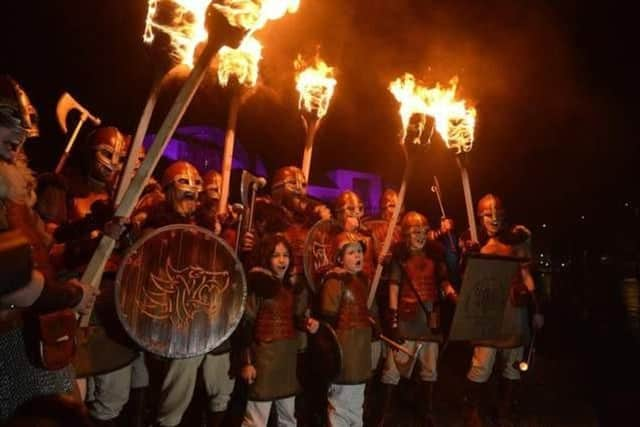Up Helly Aa: How did the Viking festival begin and the traditions behind the festival
Up Helly Aa in Shetland will see over 1,000 torch-baring guizers parade through the island’s capital of Shetland before setting a Viking Galley ablaze.
After that, there is one ‘helly’ of a party which continues with dancing across numerous halls throughout Lerwick until the early hours of the next morning.
Advertisement
Hide AdAdvertisement
Hide AdOffering a tourist boom to the community, Up Helly Aa celebrates the traditional end of the Yule period in the islands.


When did Up Helly Aa begin?
Despite being based on the Viking heritage of the far north, the festival - which kicks off again tonight - only originates back to the 1880s.
In its modern form the festival is not all that old with Viking theme only coming about over a 100 years ago.
The first galley was burnt in 1889. with previous festivals before this including flaming tarbarrels being dragged through the street accompanied by indiscriminate gunfire.
The burning of a galley is a ritual that was carried out in ancient times when a chief Viking or Jarl died.
He would be laid out upon a pyre within his own ship and after setting it alight the whole would have been set off to sea to ensure that his soul was carried to Valhalla - or Viking heaven.
Here Father Odin would greet him and thus his final journey.
Up Helly Aa traditions
Since its Victorian-era incarnation, the visually spectacular annual parade of Guizers, which culminates in the top Jarl Squad, led by the appointed chief Guizer Jarl, setting the replica longship alight, has been a strictly men-only affair.
Advertisement
Hide AdAdvertisement
Hide AdHowever all of this will change this year with a decision to include all genders into the festival has generally been welcomed in the community.
For the first time in 2023, Up Helly Aa guizers were able to manage their squads in keeping with the spirit of the festival, with no gender restrictions. The decision to relax the long-standing custom was taken by the Lerwick Up Helly Aa Committee after members discussed how to take the event forward following a two-year absence due to the Covid-19 pandemic.
In 2024 the Jarl will be joined in his squad by one of his daughters and three nieces. This will be the first occasion where there has been female participation in the Jarl Squad.
On the evening of Up Helly Aa Day, over 1,000 heavily-disguised men form ranks in the darkened streets. They shoulder stout fencing posts, topped with paraffin-soaked sacking.
More than 40 squads of guizers visit a dozen halls in rotation. They’re all invited guests at what are still private parties.
At every hall each squad performs its ‘act’, perhaps a skit on local events, a dance display in spectacular costume, or a topical send-up of a popular TV show or pop group.
Every guizer has a duty to dance with at least one of the ladies in the hall, before taking yet another dram, soaked up with vast quantities of mutton soup and bannocks.
Up to the Second World War Up Helly Aa was overwhelmingly a festival of young working class men - women have never taken part in the procession - and during the depression years the operation was run on a shoestring.
Advertisement
Hide AdAdvertisement
Hide AdIn the winter of 1931-32 there was an unsuccessful move to cancel the festival because of the dire economic situation in the town. At the same time, the Up Helly Aa committee became a self-confident organisation which poked fun at the pompous in the by then long established Up Helly Aa “bill” - sometimes driving their victims to fury.
Since 1949, when the festival resumed after the war, much has changed and much has remained the same.